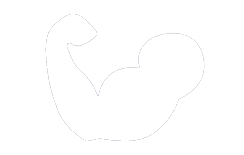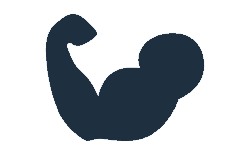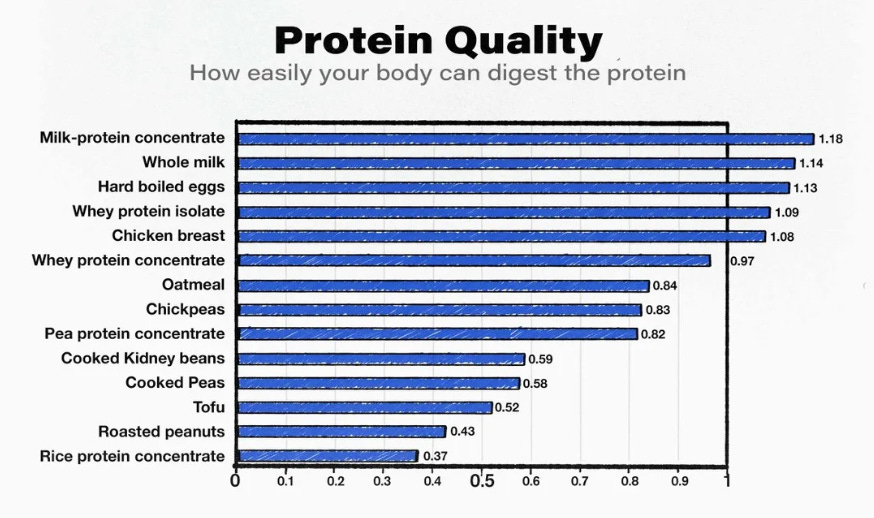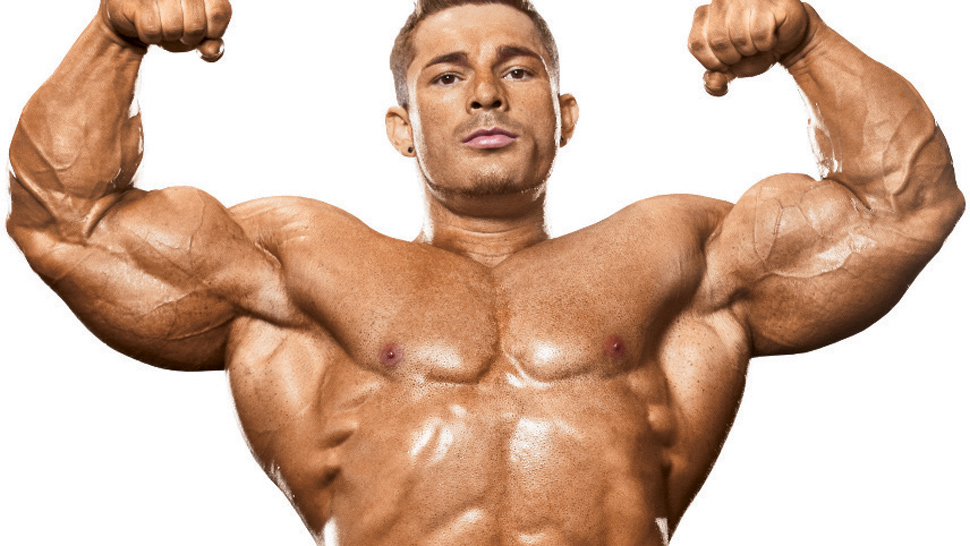· workouts · 11 min read
How To Build Muscle After 40: (Without Making The Gym Your Life)
Are you finding it more challenging to build muscle after reaching the age of 40? You're not alone. Many people experience a decrease in muscle mass and strength as they age, making it harder to achieve their fitness goals.
Are you finding it more challenging to build muscle after reaching the age of 40? You’re not alone. Many people experience a decrease in muscle mass and strength as they age, making it harder to achieve their fitness goals. Several factors contribute to this, including a decrease in testosterone levels, slower metabolism, and age-related muscle loss. But don’t let this discourage you. In this article, we’ll delve into why it’s harder to build muscle after 40 and provide practical tips on how to overcome these challenges.
From resistance training to focusing on compound exercises and increasing protein intake, we’ll explore the best strategies for building muscle after 40. We’ll discuss the top exercises specifically tailored for individuals in this age group. So, if you’re ready to take charge of your fitness journey and achieve your muscle-building goals, keep reading to discover effective techniques and exercises to help you build and maintain muscle strength after 40.
Why Is It Harder to Build Muscle After 40?
Building muscle after the age of 40 becomes more challenging due to various physiological changes that occur in the body.
As people age, they experience a decline in hormone levels, such as testosterone and growth hormone, which are crucial for muscle development. There is a gradual loss of muscle mass and a decrease in metabolic rate, making it harder to build and maintain muscle.
Incorporating resistance training into one’s exercise routine can help counteract these effects by promoting strength gains and muscle hypertrophy. Making dietary modifications to ensure adequate protein intake and nutrient support can further aid in overcoming the challenges of building muscle after 40.”
Decrease in Testosterone Levels
One of the primary reasons for the difficulty in building muscle after 40 is the natural decrease in testosterone levels that occurs with age.
This reduction in testosterone levels can have a significant impact on muscle mass and strength gains. Testosterone plays a crucial role in promoting protein synthesis, which is essential for muscle growth and repair. As levels decline, the body’s ability to undergo muscle hypertrophy, the process of increasing the size of muscle fibers, can be compromised.
Reduced testosterone levels may also contribute to an increased risk of muscle loss and decreased athletic performance as individuals age. Therefore, it’s essential to consider hormone regulation and find ways to support healthy testosterone levels for optimal muscle maintenance and development.
Slower Metabolism
As individuals age, their metabolism tends to slow down, making it more challenging to achieve muscle growth and combat muscle fatigue.
This slowdown in metabolism can affect the body’s ability to efficiently recover from intense workouts, leading to prolonged muscle fatigue. Incorporating resistance training into the fitness regimen can help counteract these effects.
Resistance training not only stimulates muscle growth but also boosts metabolism, which can contribute to better energy expenditure and enhanced recovery from exercise. By engaging in regular resistance training, individuals can mitigate the impact of age-related metabolic changes and maintain muscle strength and endurance.
Age-related Muscle Loss
After the age of 40, individuals experience a natural decline in muscle mass and a reduction in the development of muscle fibers, leading to challenges in achieving muscle hypertrophy.
This age-related muscle loss, known as sarcopenia, can significantly impact muscle strength and overall physical performance. The changes in muscle fibers, such as a decrease in type II muscle fibers, can further hinder the process of muscle development and hypertrophy.
To counteract these effects, incorporating resistance training, adequate protein intake, and proper nutrition becomes crucial in maintaining muscle mass and supporting muscle growth in older adults. Implementing these strategies can help mitigate the impact of age-related muscle decline and promote healthier aging.
How to Build Muscle After 40?
Building muscle after the age of 40 requires a strategic approach that encompasses resistance training, appropriate protein intake, and optimal recovery and rest.
It’s essential to focus on compound exercises that work multiple muscle groups simultaneously, such as squats, deadlifts, and bench presses. Ensuring that protein intake is spread evenly throughout the day can aid in muscle repair and growth.
Emphasizing the importance of sufficient sleep and rest for muscle recovery cannot be overstated, as this is when the body repairs and builds new muscle tissue. Implementing these strategies can pave the way for significant muscle gains even after the age of 40.
Resistance Training
Incorporating resistance training into your fitness regimen is essential for stimulating muscle growth, countering age-related muscle loss, and promoting strength gains after the age of 40.
Resistance training offers a multitude of benefits such as increased muscle mass, improved bone density, and enhanced metabolic function. By engaging in regular resistance training, individuals can experience a significant reduction in the risk of musculoskeletal injuries and osteoporosis. It plays a vital role in maintaining functional independence and overall quality of life as one ages.
With proper techniques and progressive overload, resistance training can help individuals of all ages build and maintain muscle mass, improving vitality, energy levels, and overall health.”
Focus on Compound Exercises
Incorporating compound exercises into your workout routine can significantly contribute to muscle development, strength gains, and enhanced muscle endurance, especially after the age of 40.
These exercises engage multiple muscle groups simultaneously, leading to more efficient and effective strength gains. They also improve overall body coordination and stability, reducing the risk of injuries. Compound exercises such as squats, deadlifts, and bench presses stimulate the release of growth hormone, promoting muscle growth and endurance. By incorporating compound exercises, individuals can achieve a well-rounded, balanced physique that supports functional movement and long-term health.”
Increase Protein Intake
Optimizing your protein intake plays a pivotal role in supporting muscle recovery, facilitating muscle growth, and maintaining a balanced diet necessary for building muscle after 40.
It’s essential to ensure that your daily protein intake meets your body’s requirements, especially for individuals engaging in regular physical activity and exercise. Protein is a key component in muscle repair and maintenance, aiding in the recovery process after strenuous workouts. Research shows that protein consumption stimulates muscle protein synthesis, a crucial mechanism for muscle growth and repair. By including high-quality protein sources, such as lean meats, eggs, dairy, and plant-based options, you can enhance your muscle health and overall fitness.
Get Enough Rest and Recovery
Prioritizing sufficient rest and recovery is crucial for managing muscle fatigue, supporting muscle repair, and promoting overall muscle health, especially for individuals building muscle after the age of 40.
This is because muscle fatigue can significantly hinder performance and muscle growth, making adequate rest essential in preventing overtraining and overuse injuries. Allowing the body time to recover is key for optimal muscle repair and rebuilding. Without adequate rest, the risk of experiencing prolonged muscle soreness and decreased muscle function increases. Therefore, by integrating strategic rest periods and recovery techniques into training routines, individuals can effectively enhance muscle recovery, reduce the risk of injury, and optimize their long-term muscle health.
Stay Consistent and Patient
Consistency and patience are key virtues for individuals seeking to achieve sustainable muscle development and growth, particularly after the age of 40.
By adhering to a consistent workout routine and patiently allowing the body to adapt and grow, individuals can experience gradual but substantial muscle gains. The importance of consistent and patient effort cannot be overstated, as it allows the body to progressively build muscle mass and strength over time, leading to long-term fitness and health benefits.
It’s essential to understand that sustainable muscle growth requires dedication, discipline, and a willingness to persist through challenges, but the rewards of a strong and resilient physique make the journey worthwhile.
What Are the Best Exercises for Building Muscle After 40?
Optimizing your exercise routine with the best-suited exercises is crucial for effectively building muscle after the age of 40, emphasizing the importance of targeted weight training and specific exercises.
Incorporating compound movements such as squats, deadlifts, and bench presses can significantly stimulate muscle growth and strength development. Incorporating progressive overload by gradually increasing the weight and intensity of your workouts can help to continuously challenge and stimulate muscle fibers.
It’s also essential to include exercises that target multiple muscle groups simultaneously, promoting overall muscular balance and symmetry. Prioritizing proper form and technique during each exercise is vital for maximizing muscle engagement and minimizing the risk of injury.
Squats
Incorporating squats into your workout routine can significantly enhance muscle strength, power, and endurance, making them an ideal exercise for individuals looking to build muscle after the age of 40.
Squats engage large muscle groups such as the quadriceps, hamstrings, and glutes, promoting overall lower body strength and stability. For individuals over 40, maintaining muscle endurance and power becomes increasingly important, and squats are an effective way to achieve this. By performing squats with proper form and gradually increasing resistance, one can improve functional strength, joint health, and balance.
Squats can help in maintaining bone density, a crucial factor for individuals in their 40s and beyond.
Deadlifts
Incorporating deadlifts into your workout regimen can significantly contribute to muscle development, combat muscle fatigue, and promote overall muscle health, particularly for individuals building muscle after the age of 40.
Deadlifts are known to engage multiple muscle groups simultaneously, including the glutes, hamstrings, lower back, and core, making them a highly efficient exercise for building overall strength and muscle mass. By regularly incorporating deadlifts into your routine, you can enhance your body’s ability to manage fatigue and increase muscular endurance.
The compound nature of the deadlift promotes functional strength, helping to reduce the risk of injury and improve overall muscle health. This makes deadlifts a valuable addition to any muscle-building and fatigue management program.
Bench Press
Integrating bench presses into your workout routine can effectively contribute to muscle mass, hypertrophy, and definition, making them a valuable exercise for individuals aiming to build muscle after the age of 40.
This compound movement not only targets the chest but also engages the shoulders, triceps, and upper back, aiding in overall upper body strength and muscle development. Bench presses help improve bone density, critical for individuals over 40.
By progressively increasing the weights and incorporating variations such as incline or decline bench presses, one can optimize muscle hypertrophy and definition, promoting a well-rounded physique and functional strength for day-to-day activities.
Pull-Ups
Including pull-ups in your exercise routine can significantly enhance muscle endurance, agility, and stability, making them an excellent choice for individuals focused on building muscle after the age of 40.
They are especially beneficial for targeting the muscles in the upper body, including the back, shoulders, and arms. As individuals age, maintaining muscle strength and agility becomes increasingly important to support overall stability and mobility. Pull-ups engage multiple muscle groups simultaneously, promoting functional strength that can aid in daily activities and reduce the risk of injury.
Their versatility allows for variations that can be tailored to different fitness levels and goals, making them a valuable addition to any workout regimen focused on muscle stability and agility.
Shoulder Press
Incorporating shoulder presses into your workout routine can significantly enhance muscle power, performance, and coordination, making them a valuable exercise for individuals seeking to build muscle after the age of 40.
By engaging multiple muscle groups, shoulder presses not only contribute to overall strength and stability but also promote improved muscle coordination, which is crucial for functional movement, posture, and injury prevention as we age.
The controlled, upward motion of the shoulder press, when executed with proper form, can help enhance muscle power in the deltoids, triceps, and upper back muscles. This exercise also aids in developing muscle endurance, making it particularly beneficial for individuals over 40 looking to maintain strength and mobility.
Frequently Asked Questions
How can I build muscle after 40?
Building muscle after 40 can be challenging, but it is definitely possible with the right diet and exercise routine.
What should I eat to build muscle after 40?
To build muscle after 40, your diet should include plenty of protein, healthy fats, and complex carbohydrates. Foods like lean meats, fish, eggs, nuts, and whole grains are all great options.
Is it too late to start building muscle after 40?
It is never too late to start building muscle, even after 40. In fact, regular strength training can help prevent age-related muscle loss and improve overall health and fitness.
Do I need to take supplements to build muscle after 40?
While supplements can be helpful, they are not necessary to build muscle after 40. A well-rounded diet and consistent exercise routine are the most important factors in building muscle at any age.
How often should I work out to build muscle after 40?
It is recommended to strength train at least 2-3 times a week to build muscle after 40. Be sure to give your muscles time to rest and recover between workouts.
Are there any specific exercises I should do to build muscle after 40?
Compound exercises that work multiple muscle groups at once, such as squats, deadlifts, and push-ups, are great for building muscle after 40. It is also important to incorporate exercises that target specific areas of the body you want to see improvement in.






